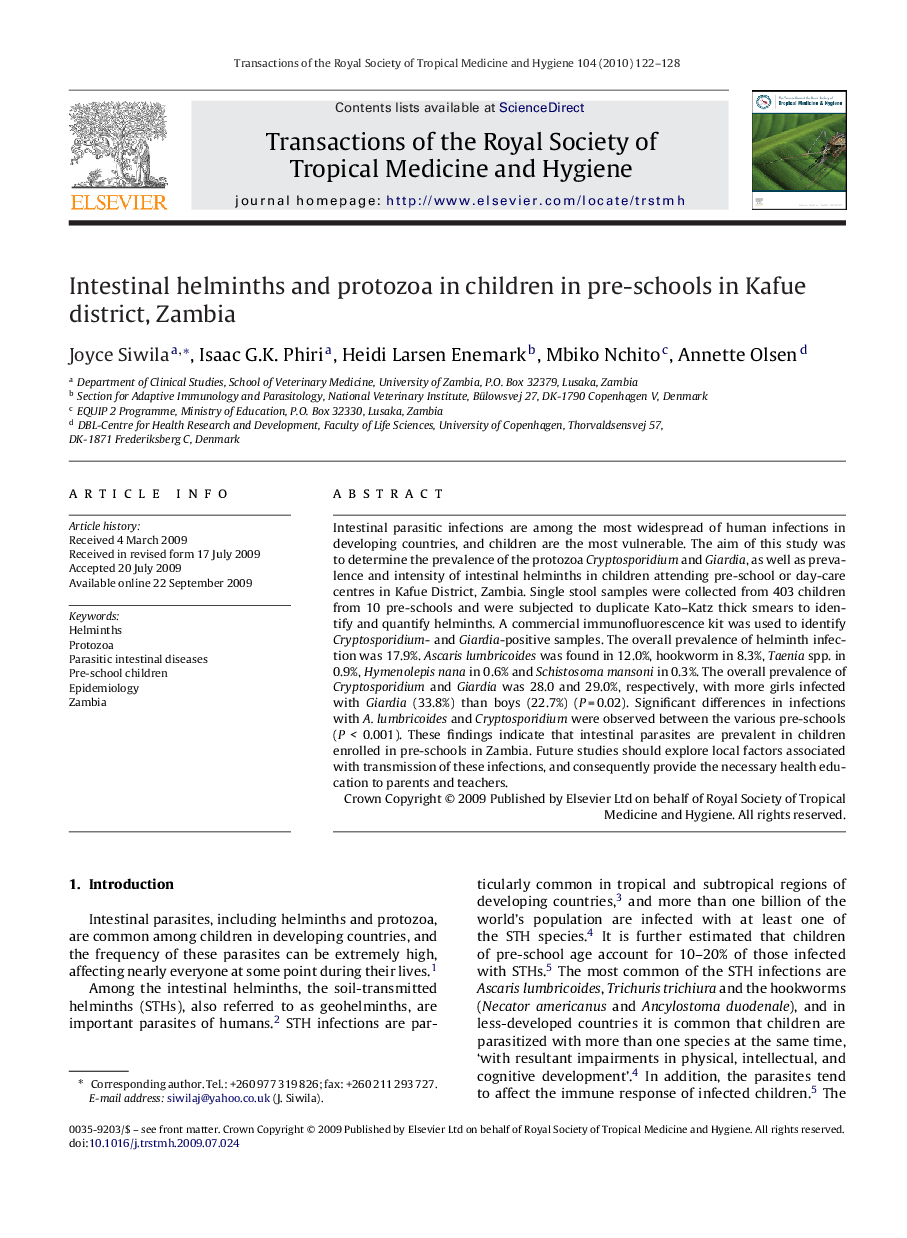| Article ID | Journal | Published Year | Pages | File Type |
|---|---|---|---|---|
| 6137565 | Transactions of the Royal Society of Tropical Medicine and Hygiene | 2010 | 7 Pages |
Abstract
Intestinal parasitic infections are among the most widespread of human infections in developing countries, and children are the most vulnerable. The aim of this study was to determine the prevalence of the protozoa Cryptosporidium and Giardia, as well as prevalence and intensity of intestinal helminths in children attending pre-school or day-care centres in Kafue District, Zambia. Single stool samples were collected from 403 children from 10 pre-schools and were subjected to duplicate Kato-Katz thick smears to identify and quantify helminths. A commercial immunofluorescence kit was used to identify Cryptosporidium- and Giardia-positive samples. The overall prevalence of helminth infection was 17.9%. Ascaris lumbricoides was found in 12.0%, hookworm in 8.3%, Taenia spp. in 0.9%, Hymenolepis nana in 0.6% and Schistosoma mansoni in 0.3%. The overall prevalence of Cryptosporidium and Giardia was 28.0 and 29.0%, respectively, with more girls infected with Giardia (33.8%) than boys (22.7%) (PÂ =Â 0.02). Significant differences in infections with A. lumbricoides and Cryptosporidium were observed between the various pre-schools (P < 0.001). These findings indicate that intestinal parasites are prevalent in children enrolled in pre-schools in Zambia. Future studies should explore local factors associated with transmission of these infections, and consequently provide the necessary health education to parents and teachers.
Related Topics
Life Sciences
Immunology and Microbiology
Applied Microbiology and Biotechnology
Authors
Joyce Siwila, Isaac G.K. Phiri, Heidi Larsen Enemark, Mbiko Nchito, Annette Olsen,
